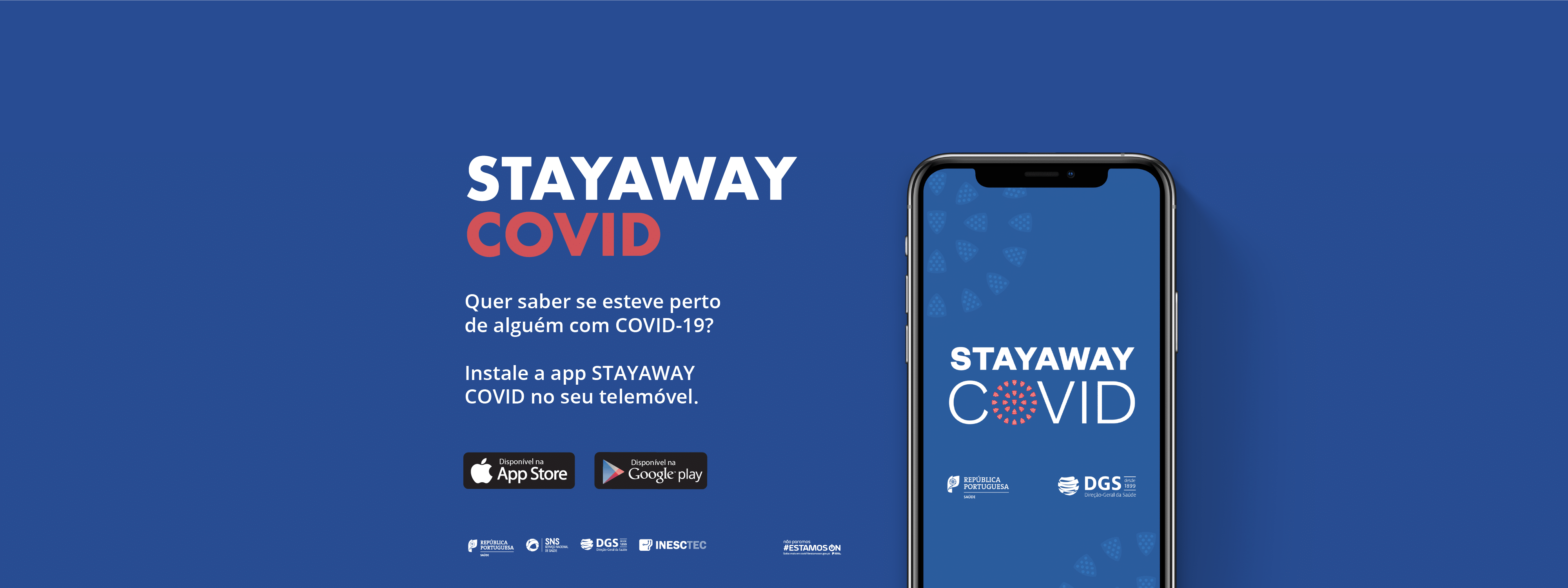More than 50% of Portuguese people have never installed the StayawayCOVID app and in January 2021 60% of users had already uninstalled the app from their phones.
The launch of cell phone applications (Apps) that allowed contact tracing and signaling risk situations, taking into account the proximity of people, proved to be one of the least successful measures implemented during the COVID-19 pandemic in the European Union. Portugal leads the list of countries with the lowest use, never having exceeded three million downloads. More than 50% of Portuguese have never installed the StayawayCOVID app and only six months after its launch, around 60% of Portuguese users had already uninstalled the app from their phones.
The results are now published in Briefing Note #4 Health Sector Analysis: The use of Contact Tracing Apps during the pandemic prepared by researchers Eduardo Costa and Pedro Pita Barros, holder of the BPI | “la Caixa” Foundation Chair in Health Economics, within the scope of the Initiative for Social Equity, a partnership between the “la Caixa” Foundation, BPI and Nova SBE also reveal that the low relevance and usefulness of these applications was directly related to 3 factors:
the technological capacity of the application itself (high technical requirements and the need for active patient intervention in entering codes provided by the NHS);
individual citizen buy-in (directly related to concerns about sharing personal data, digital literacy and perceived usefulness of the app);
the ability to reach a minimum scale to generate a network effect (dependent on an externality associated with widespread use by the population).
In Portugal, the low individual adherence was reflected in the inability to reach the minimum scale for the effective functioning of the application: the number of facilities (3 million) and the number of codes provided by the SNS (only 2,708) seems to have been a determining factor for the low usefulness of the application.
This Information Note is based on data collected in the European COVID-19 Survey (ECOS), an initiative resulting from a partnership between several European university institutions and which monitors the population’s perceptions and behaviors over time regarding the COVID-19 pandemic. The survey was carried out periodically in Portugal, Germany, Denmark, the United Kingdom, Italy, France, the Netherlands and Spain, covering a representative sample of about a thousand people from the adult population in each country. The data measured allow us to identify the factors that can enhance greater or lesser use of applications in European countries.
Analyzing the use of the contact tracing application in the eight countries in which the survey was conducted, it appears that the majority of the population chose not to install, or was unaware of the existence of the application, with the lowest frequent use in Portugal (8%) and the highest in Germany (32%).In addition to the cultural factors of each country, variations in the functionalities of the apps also seem to have motivated different levels of uptake in the various countries:those who chose to implement more advanced apps (which allowed not only contact tracing but also a set of other functionalities such as symptom evolution and monitoring, regional epidemiological information on the evolution of the pandemic, ordering COVID-19 tests, receiving test results and tracking the days remaining until the end of the quarantine period) showed advantages and increased the usefulness of the apps from the citizen’s point of view. However, as the most advanced and functional products were apps developed by Apple and Google, concerns about privacy risks increased and seem to have contributed to mitigating the effect of higher take-up in countries with more sophisticated and functional apps.
The personal characteristics of the respondents also proved to be strong constraints on take-up. Age is pointed out as a determining factor, with the installation of the application being more common among the younger age groups (between 18 and 24 years old, 56% of respondents reported having the application installed in January 2022 while in the age group above 65, only 45% had the application installed). However, and despite the lower volume of installations, older age groups reported higher levels of frequent use of the app: in the 65+ age group, 19% of respondents reported using the app frequently, which corresponds to around 42% of those who had the app installed. Among younger respondents (aged 18-24), only 12% reported using the app frequently, which corresponds to only 22% of those who had the app installed. ‘The duality between “having the app installed” and “using the app frequently” probably reflects the trade-offs that different generations face. On the one hand, the cost associated with installing the app tends to be lower in younger age groups, given the greater ease and use of smartphones. On the other hand, levels of fear of the pandemic tend to be higher among older people, who are more at risk of serious illness and higher risk of mortality. The combination of these factors may explain the observed duality: after the effort required to install the app among older people, it is expected that they will make greater use of them. A very low cost of installing the app among younger people may lead to many installing the app without using it frequently’.
Schooling and income level were also identified as conditioning factors in the adoption of apps, revealing a higher use among the more favored socioeconomic classes, typically with higher levels of schooling and income. Since the burden of disease is typically higher among the more disadvantaged socioeconomic classes (more potentially subject to high risks due to a greater volume of social contacts, resulting from less remote work and greater exposure, for example, in public transport), the data collected also allow us to identify a trade-off between the costs and the benefit of using the application since in the more favored economic classes, the benefits of using the application are potentially lower than the benefits of less favored economic classes. However, and despite the benefit being higher for the most disadvantaged groups, the cost of using it also tends to be higher, as it requires high levels of digital literacy and compatible equipment.
The data collected also show significant differences in the levels of use of the application between vaccinated and unvaccinated citizens: less than half of the vaccinated population reported not having the application installed while in the unvaccinated population this indicator reaches 80%. Once again, a cost-benefit trade-off is revealed in the use of the application that signals, in the unvaccinated group, concerns about intrusion, lack of security of personal data and a low perception of risk of contagion.
Citizens’ agreement with the use of this type of control mechanism also dictates the level of installation and use of the application, which grows substantially with citizens’ support for their use, revealing the extreme importance of public support for this type of measure.
Finally, family dynamics also condition the levels of use of the app, revealing, although not significantly, that the levels of installation and use of the app are higher among households with high-risk members.
The identification of the main factors contributing to low uptake in different countries suggests a number of interventions that could have contributed to greater adoption. According to the researchers, ‘the possible need to use this type of mechanism in the future will have to be accompanied by specific interventions with the most resistant population groups. The balance between costs and benefits is crucial to induce individual adoption, which in turn is a necessary condition to achieve a net effect, obtained through a minimum scale – without which the application is of no relevant use’.









